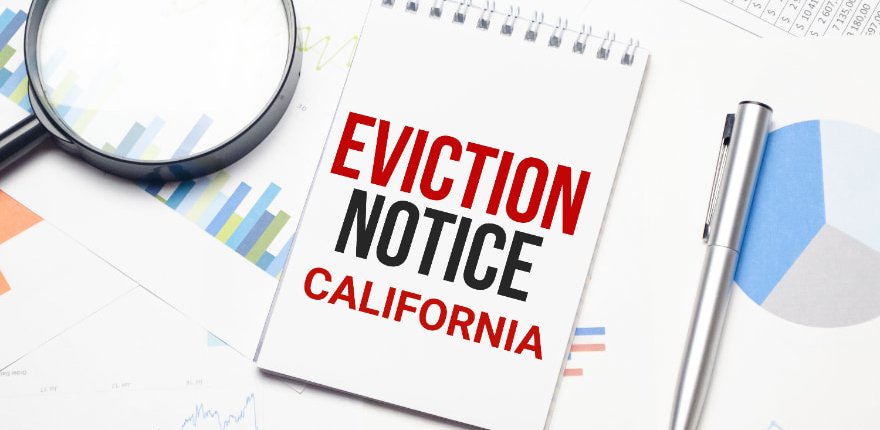The Eviction Process in Riverside can get tricky for those who have never had the pleasure of experiencing the stress it brings.Today’s blog post will give an in depth overview of the eviction process in Riverside, California.
Introduction:
With over 12 years of experience in navigating the world of Riverside’s rental property landscape, PMI Riverside has challenged itself to understand the process of evictions. Understanding the eviction process is essential for a landlord. This guide aims to provide a detailed overview on the legal procedures, rights, and responsibilities involved in the eviction process.
Grounds for Eviction:
Considering California is a tenant friendly state, you need to make sure that it is fully legal to evict your current tenant. To have the legal grounds to actually start the eviction process in Riverside, landlords need to make sure that at least 1 of the following requirements has been met:
1. Non-payment of Rent:
In Riverside, landlords can initiate eviction proceedings when tenants fail to pay rent on time. The process usually begins with serving a Three-Day Notice to Pay Rent or Quit, providing tenants with a brief window to address overdue rent.
2. Lease Violations:
Violating lease terms is another grounds for eviction. Landlords can issue a Three-Day Notice to Cure or Quit, allowing tenants a short period to rectify the violation or face eviction.
3. Nuisance or Illegal Activities:
Engaging in nuisance behavior or illegal activities on the property provides landlords with grounds for eviction. Proper documentation of evidence is crucial in such cases.
Notice Requirements:
The next step in the Eviction Process is making sure that you meet the requirements to actually serve notice to tenants. There are many different types of notices, which include:
1. Three-Day Notice:
For non-payment of rent or lease violations, landlords must serve a Three-Day Notice. This document outlines the issue and specifies the time frame for resolution.
2. 30/60-Day Notice:
In "no-fault" evictions, landlords seeking to end a month-to-month tenancy without specifying a reason must provide a 30 or 60-day notice. This allows tenants sufficient time to find alternative housing.
Unlawful Detainer Lawsuit:
1. Filing the Complaint:
When a tenant fails to comply with the notice, landlords can file an Unlawful Detainer lawsuit, formally initiating the eviction process through the court system.
2. Serving the Tenant:
Proper service of legal documents is critical. Landlords must ensure tenants receive the summons and complaint according to legal guidelines.
3. Tenant's Response Options:
Tenants have the right to respond to the lawsuit, contesting the eviction by presenting defenses such as improper notice or landlord retaliation.
Court Process:
1. Overview of Proceedings:
The court process involves hearings during which both parties present their cases. Landlords must be well-prepared with documentation to support their claims.
2. Possible Tenant Defenses:
Tenants may defend against eviction by proving compliance with notices, asserting their rights to a habitable dwelling, or challenging the legality of the eviction.
3. Writ of Possession:
If the court rules in favor of the landlord, a Writ of Possession is issued, allowing the landlord to regain possession of the property. The sheriff may enforce this writ.
Tenant Rights:
1. Habitable Property:
Tenants have the right to a habitable living environment. Landlords must promptly address and rectify maintenance issues to avoid legal complications.
2. Protection Against Retaliation:
California law prohibits landlords from retaliatory eviction. Landlords cannot initiate eviction if a tenant exercises their rights, such as reporting code violations.
3. Legal Aid Resources:
Tenants facing eviction have access to legal aid resources. Landlords should be aware that tenants may seek legal assistance to navigate the eviction process.
Post-Eviction:
1. Changing Locks and Property Reclamation:
After completing the eviction, landlords can change locks to secure the property, following legal procedures to avoid potential liabilities.
2. Handling Tenant Belongings:
Specific procedures, dictated by California law, must be followed for handling tenant belongings left on the property post-eviction.
3. Legal Consequences:
Landlords should exercise caution to avoid actions leading to legal consequences. Understanding the Fair Housing Act implications and other regulations is crucial to sidestep legal pitfalls.
Tips for Landlords:
1. Document Lease Violations:
Thorough documentation of lease violations is key. Keep records of communication, notices served, and relevant evidence to strengthen your case in court.
2. Seek Legal Advice:
Before initiating the eviction process, landlords should seek legal advice. Consulting with an attorney ensures compliance with California's ever-evolving landlord-tenant laws.
3. Fair Housing Act Awareness:
Landlords must be aware of the implications of the Fair Housing Act. Discrimination during the eviction process can lead to legal consequences.
Conclusion:
Navigating the eviction process in California requires a comprehensive understanding of the legal landscape. Landlords must approach the process with diligence, adherence to legal requirements, and a commitment to fair and lawful practices. By staying informed and proactive, landlords can effectively manage their properties while respecting the rights of tenants in the California.
If you are looking for professional property management services in the Riverside area, please feel free to get in touch with us! We would love to help you make property management manageable! Also be sure to follow us on social media, for more information on topics like this one!


